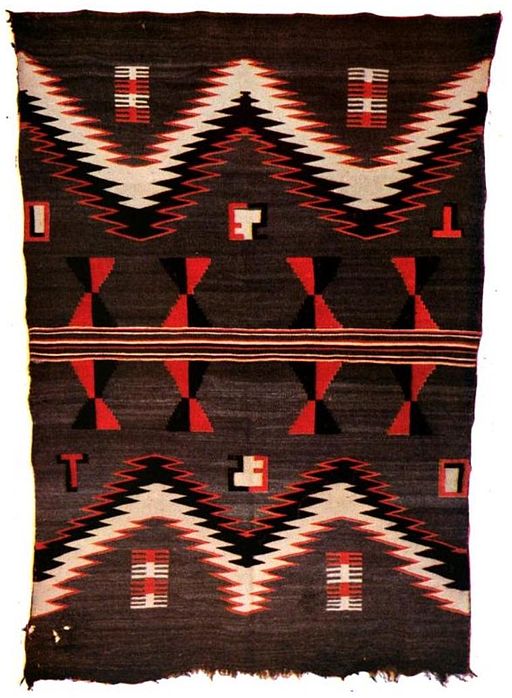Material Culture - Weaving and Jewelry
|
The earliest Diné did not weave but wore buckskin clothing. During the Re-Conquest the Diné adopted both sheepherding and weaving from the Pueblo Indians. Instead of weaving cotton as did the Pueblo Indians, however, the Navajo wove wool obtained from their sheep. Although initially they wove primarily clothing for their own use, by the late 1800s they made rugs for Anglo markets. By the early 20th century, Navajo rugs had become a major source of income for the Navajo and it continues to be so today. Navajo blanket.
|
Silverworking also came to be closely identified with the Navajo. While at the Bosque Redondo the Navajo men learned silverworking, and after returning to their homeland several began to set turquoise into a silver overlay. As with the Navajo rugs, Navajo jewelry became a sought-after tourist souvenir. |
|
19th century Navajo blanket, from 1914 book on Native American textiles Source - https://commons.wikimedia.org/wiki/File:Navajo_blanket.jpg
|
Navajo silverwork belt Source - shutterstock_42918886-2.jpg
|
Click on next page to continue.


